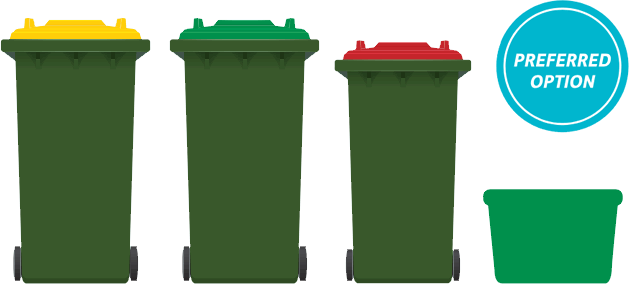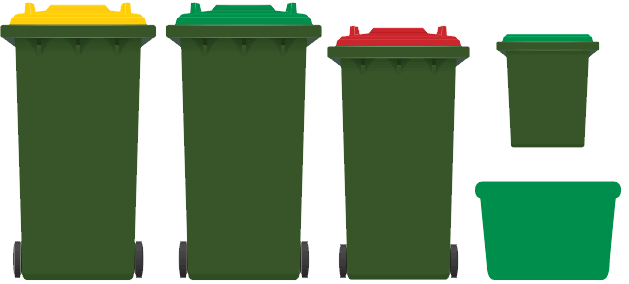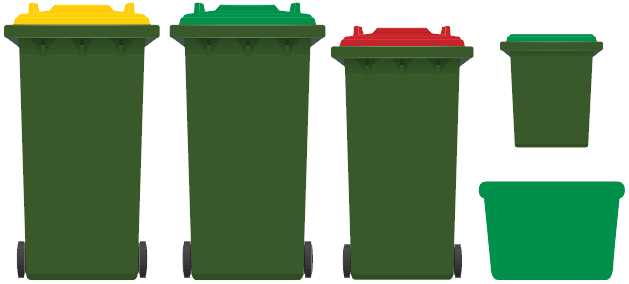Te Mahere Pae Tawhiti 2024-34
THE CONSULTATION PROCESS HAS CLOSED.
Thank you for your interest. The final Long Term Plan 2024-34 was adopted by Council on 5 August 2024, following consideration of all the submissions and feedback received.
Read the full Long Term Plan 2024-34 and supporting documents.
On 12 April, the period for providing written submissions closed. We received more than 900 submissions. Verbal submissions were heard between 18-19 April.
From 8 to 10 May, your Mayor and Councillors considered all the feedback and deliberated about the key decisions of the plan, including the budgets and projects.
The revised plan was then thoroughly checked by Audit New Zealand, providing Whakatāne District communities with confidence in the plan's financial reliability and comprehensiveness.
The finalised plan was adopted on Monday, 5 August 2024 at an Extraordinary Council meeting. Council meetings are live streamed and recorded. More information can be found here. We will also publish a summary of the feedback we received.
Read the full Long Term Plan 2024-34 - Consultation Document - (PDF, 5 MB)
Read the Mayor's Expectations for LTP 2024-2034 »
6 August 2024 - Whakatāne District Council adopts Long Term Plan 2024-34
Whakatāne District Council adopted its Long Term Plan 2024-34 and associated supporting documents at an Extraordinary Council Meeting held yesterday (5 August).
23 July 2024 - Council confirms Long Term Plan adoption date alongside positive credit rating
Whakatāne District Council has confirmed that the adoption of its Long Term Plan 2024-34 will take place at an Extraordinary Council meeting at 9am on Monday, 5 August 2024. The confirmation follows an unavoidable delay that pushed back the anticipated adoption from the 27 June Ordinary Council meeting.
25 June 2024 - Long Term Plan 2024-34 adoption delayed
Whakatāne District Council has announced the adoption of its 2024-34 Long Term Plan has been delayed and will not be an item on the agenda at the upcoming 27 June Ordinary Council meeting.
Where we're at right now
Te tūnga ināia tonu nei

We know that councils are continually being asked to cut costs but keep delivering the same services. We're facing the same impacts of inflation and cost increases as councils throughout Aotearoa New Zealand, meaning we're looking at higher rates increases than ever before. Alongside this, we have some critical infrastructure projects that we need to fund. As we've developed this plan, it's been important we keep our focus on our communities and work to understand what matters to you most. It's important that the Mayor and Councillors hear from you before they make their final decision about what's in this Long Term Plan.
- Things are really tough
The world has shifted significantly since our last Long Term Plan. Economic conditions have changed dramatically causing record-high cost escalations on multiple fronts, high interest rates and rising compliance and insurance costs. We've worked in previous years to keep rates at an affordable level and annual rates increases to a minimum in response to the rising cost of living. This has created a funding gap that we now need to close.
- A broken funding system
Funding demands on councils are exceeding what they're capable of achieving, and we’re not exempt. Council's funding model is both complex and rigid. It's not comparable to a household or business budgeting process. We rely almost entirely on ratepayers to finance us, so we keep tapping into the same pool of people and businesses for funding. This view is supported by a recent review of local government that has identified that councils' funding system is not sustainable in its current format.
- Three Waters is back
Under the previous government, work was underway to remove the Three Waters (drinking water, storm water and waste water) from Council's core business and place them into a new entity with its own funding structure. The new government's recent decision to scrap the Three Waters Services Reforms has put the responsibility back on to councils. We can only factor minimal maintenance and compliance costs into the budget for the next 10 years due to funding limitations. This means that important upgrades will not be able to happen unless something significant changes with how our Three Waters infrastructure is funded and managed.
- Timing is important
The things that have led to this point have been happening over a long period and will not be resolved easily. We know that we need to focus on keeping costs down by choosing projects wisely. We understand that delaying some projects might seem sensible now, but abandoning them would cost more in the long run. In our Long Term Plan, we're proposing to adjust the timing and scale of our investments to ensure our communities stay as strong and vibrant as possible.
What we asked
In June 2023, we kicked off discussions specifically about this Long Term Plan. We got out and about to talk about Council's five strategic priorities and find out what’s important to you when planning for the next 10 years. You gave a lot of great feedback, with more than 360 submissions received - the most that Council has ever received during the early stages of developing a Long Term Plan. It was clear to see that a lot of people care about the future of the district, and that people want to know what their rates are being spent on, now more than ever.

Key question: How should we scale, stage and fund necessary upgrades to the Rex Morpeth Recreation Hub?
Me pēhea mātau e mahi, e whakapau moni anō hoki kia whakamohoa ai te Papa Rēhia a Rex Morpeth?
Rex Morpeth Recreation Hub, which includes Whakatāne War Memorial Hall, Rex Morpeth Park, Rugby Park, Whakatāne Aquatic and Fitness Centre, Whakatāne Arts and Craft Centre, and a number of sports clubs, is one of the Whakatāne District’s most loved and used community assets.
While these facilities have served us well, significant maintenance and upgrades are now required to meet health and safety standards, meet existing and growing demands for indoor court and events space and to further economic opportunities.
- Read about the Rex Morpeth Recreation Hub
Any upgrades to the Rex Morpeth Recreation Hub will need to be delivered in stages over 10 years to allow time to carry out detailed design and planning, seek feedback, obtain external funding and carry out construction works.
We're proposing a redevelopment of the Rex Morpeth Recreation Hub which includes:
- A multi-purpose facility with significant upgrades to Whakatāne War Memorial Hall, including the Little Theatre
- A sports pavilion to replace the existing Rugby Park grandstand
- An accessibility-friendly playground
- Increased carparking space
- Other required improvements over the Rex Morpeth Recreation Hub area
For more detail on this key question - see pages 24-25 of the consultation document - (PDF, 5 MB)

Key question: How should we manage foodwaste collection?
Me pēhea mātau e whakahaere i te kohikohinga para kai?
The government has indicated that councils will need to introduce kerbside foodwaste collections to urban properties by 1 January 2027. We want to get a head-start and aim to start these services on 1 July 2026.
Foodwaste makes up about 20-30% of what we put in our kerbside general waste bin. The cost of sending waste to landfill continues to rise. It makes sense to keep our foodwaste out of landfill and turn it into a reusable resource i.e. compost. Removing the foodwaste from your general waste will both reduce the volume and the bulk of the 'stinky' stuff.
- Read about the options for foodwaste collection
We're proposing to introduce a new 140 litre bin for fortnightly general waste collection for urban properties currently receiving kerbside collections.
Foodwaste will be combined with your existing greenwaste bin and collected weekly. Free worm farms or compost bins will be supplied to rural property owners who want them to help manage foodwaste.
These are the options we're asking for your feedback on. For more detail on this key question - see pages 27-28 of the Consultation Document.

Option one (preferred option): Mixed foodwaste and greenwaste for urban properties only. Rate increase per property (for those already receiving the greenwaste kerbside service) approx. $35-45 per year.

Option two: Separate foodwaste collection for urban properties only. Requires separate foodwaste bin. Rate increase per property (for those already receiving kerbside services) approx. $60-$70 per year.

Option three: Separate foodwaste collection to all properties. Requires separate foodwaste bin. Rate increase per property (for those already receiving kerbside services) approx. $70-$80 per year.
See pages 27-28 of the consultation document - (PDF, 5 MB)

Key question: How quickly should we close our funding gap?
Ka hia ngā tau me whakaiti mātau i te āputa tahua?
The starting position of this Long Term Plan means current rates are not covering our cost increases. When we talk about the funding gap, we’re referring to the costs of delivering our day-to-day services, renewing existing assets and covering debt and interest payments. We've been using borrowings to fund our asset renewals, which has been acceptable in the short-term. However, this is not a sustainable option for the medium-to-long term.
- Read about the options for closing our funding gap.
The combination of extraordinary cost escalations and increased insurance and compliance costs has created a funding gap of approximately $14 million. This is simply the reality of unforeseen and unprecedented increases, and not from financial mismanagement.
We need to close the gap, and the question we're asking is, how quickly? If we recover the gap quickly, then we need to pay more in rates increases in the early years of this Long Term Plan. The catch is, the longer we take to repay, the greater the amount of interest we're paying on our debt borrowing, and the more people will need to pay in the future.
Having debt isn’t a bad thing - it means we can spread the cost of assets intergenerationally, meaning that people who will benefit from it in the future will also pay their share. We need to find a balance between paying now and paying later.
We're proposing to recover the funding gap over a medium-term of about six years. This would see an additional cost to ratepayers of $2.4 million added in year one, with a total average rates increase per property of 17.1%. There would be $36 million additional borrowing costs at the end of 10 years under this option.
These are the options we're asking for your feedback on. For more detail on this key question - see pages 30-31 of the Consultation Document.
OPTION 1: Close the gap quickly so we pay less in the future
This would see an additional cost to ratepayers of $14.4 million added in year one, with a total average rates increase per property of 38.6%.OPTION 2: Close the gap in the short term to avoid greater debt
This would see an additional cost to ratepayers of $5.4 million added in year one, with a total average rates increase per property of 22.2%.OPTION 3: Close the gap in the medium term to ease the burden now (Preferred option)
This would see an additional cost to ratepayers of $2.4 million added in year one, with a total average rates increase per property of 17.1%.See pages 30-31 of the consultation document - (PDF, 5 MB)

Key question: How should we distribute rates increases across the properties in our district?
Me pēhea mātau e tuari i ngā tāke kaunihera puta noa i te rohe?
Your rates are divided up into two main groups: targeted rates and general rates. Targeted rates are paid by a specific group of ratepayers who receive a specific service e.g. urban kerbside rubbish collection. General rates are split into two portions - one portion is based on your property’s capital value, how you use the property (residential, business, farm, short-term accommodation) and whether your property’s location is urban or rural. The other portion is a fixed charge is known as the Uniform Annual General Charge (UAGC), which is a flat rate that every property pays regardless of its capital value or location.
- Read more about distributing rate increases across the properties in our district.
The fixed charge UAGC helps to equally spread the cost of providing Council services that have benefits across the district, while the general rate helps to spread the cost of providing services in a more equitable manner. The capital value is broadly used as an indicator of ability to pay i.e. the higher the capital value, the greater the ability to pay. Charging a higher UAGC increases the overall rates on lower-value properties and decreases the overall rates on higher-value properties. Moving the UAGC lower number down means that those in lower-value properties are likely to pay a lesser amount in total.
We're proposing to lower the UAGC to 20% for year one of the Long Term Plan (2024/2025) in response to cost of living increases and to better reflect the ability for people who own lower-value properties to pay.
For more detail on this key question - see pages 32-35 of the consultation document - (PDF, 5 MB)
Other policies and plans for consultation
Ētahi atu Kaupapa Here me ētahi atu Mahere e uiuitia nei
We proposed changes to a number of financial policies that support the Long Term Plan.
These policies and plans were out for consultation alongside the Long Term Plan:

